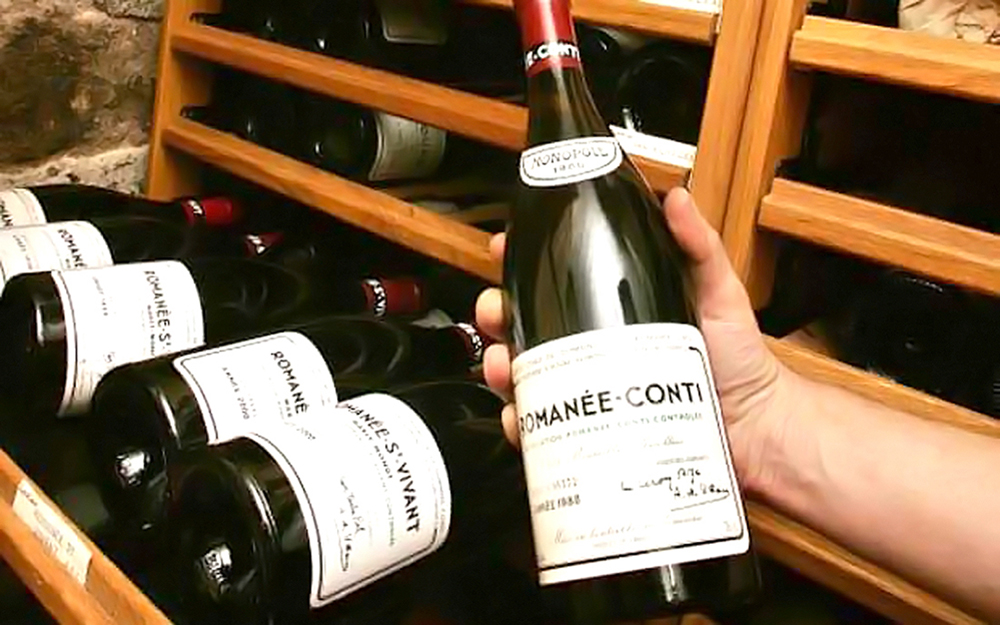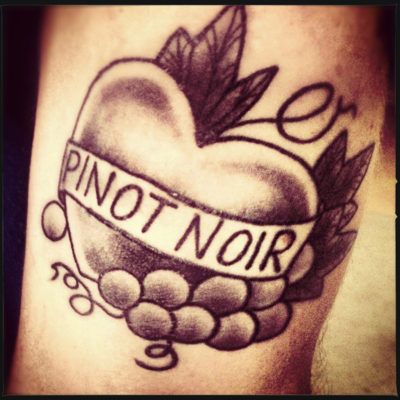
BY RICK RIOZZA
If you were to catch a gifted poet quietly jotting down some lines on paper, I’m thinking that the glass of wine sitting by them would probably be a Pinot Noir.
There’s an allure to that wine that can take you to the windmills of you mind. The wafts of its enticing perfumed aromas are like the Sirens sweetly singing—you’re drawn, with no desire to relent. Your reserved love affair is quickly kindled as you sip and swirl an incredible mélange of mouth-satisfying far-flung flavors that include dark chocolate, strawberries, cranberries; coffee, cola; flowers, roses, violets; earth, truffles, cinnamon, and smoke & spices.
You may be a Cab fan—and I am big time and consider myself a Bordeaux lover. I consume more Malbec than most, and, as your readers can attest, I can go on and on with all my favorite red Italian varietals incessantly. But when I have that relaxing moment where I’m experiencing the wonders of that silky Pinot beautifully portrayed with finesse in bouquet and savor essences just described above—well, how disloyal can one wine lover be.
 Red wine from Burgundy France is Pinot Noir and the wines are legendary in the wine world. So many experienced wine lovers will confidently declare that no other red wine can beat the complexity, fullness, and style of a great Pinot Noir from the Cote d’Or, the “golden slope” in La Bourgogne. Once you’ve been there, everyone speaks of something magical in their vineyards. Yes—this is where the most expensive Romanée-Conti, La Tache, Richebourg, La Vivant etc., exist, thrive, and are shockingly good—ethereal even.
Red wine from Burgundy France is Pinot Noir and the wines are legendary in the wine world. So many experienced wine lovers will confidently declare that no other red wine can beat the complexity, fullness, and style of a great Pinot Noir from the Cote d’Or, the “golden slope” in La Bourgogne. Once you’ve been there, everyone speaks of something magical in their vineyards. Yes—this is where the most expensive Romanée-Conti, La Tache, Richebourg, La Vivant etc., exist, thrive, and are shockingly good—ethereal even.
Aldo Sohm, world- renowned sommelier at Le Bernardin, says, “Burgundy Pinot Noirs are like divas; they all want to be understood, yet they don’t care what other people think because they are so eccentric.” It’s this Burgundian profile that caused the whole world to try to emulate it. Be it California, Oregon, South Africa, or New Zealand, wine makers continually strive for that French benchmark on their own turf.
A good Pinot Noir from anywhere in the world, however, must carry that “aromatic” complexity: After decanting for at least an hour, the aroma should draw you in and the palate should be that incredible balance of acidity, alcohol, fruitiness, and a mild touch of those puckering tannins.
It seems, in a fun way, that where red Bordeaux attracts the intellectual, Pinot Noir attracts the romantic, the artist, the poet. And just like them, the Pinot Noir grape is very sensitive—it’s a very delicate grape varietal that needs careful attention both in the vineyard and in the winery.
The good news around town is that there is more and better Pinot Noir on the market shelves than ever before. We’ve all experienced the “Sideways” effect more than a dozen years ago, where due to one movie, Pinot Noir became the darling of the “in crowd” while demoting the prior charming Merlot.
The best news resulting from the effect is that so many winemakers jumped on the Pinot bandwagon, that today there is more quality Pinot on the market which includes the reasonably priced product. Ten years ago, you were on notice if you purchased a $10 Pinot Noir: it could well be a washout with harsh or off-putting flavors. Now, there are very tasty deals of good quality Pinot hovering around those prices.
In California and Oregon, we have the blessings of the Pacific of which cools and settles the delicate grapevines. Great Pinot Noir areas include the Carneros District, the Russian River Valley, Anderson Valley, Santa Lucia Highlands, and Santa Ynez Valley—Santa Rita Hills: They tend to be some of the best. The clayey red earth of Dundee Hills in the Willamette [wil-LAM-et] Valley, Oregon, along with newer sub-divisions, is regarded as one of the best terroirs for this grape. And there’s no question that the Oregonian more resembles the French red of Burgundy.
Some of you relish the Burgundian and even the Oregonian style of Pinot that accentuates nuanced fruit flavors along with terroir complexities. Others, generally those who love the bold fruit (that adore bold California Cabs as well), will usually choose from the California AVAs—and especially from Santa Barbara’s Santa Rita Hills.
The wines from this sub-region of Santa Ynez Valley are known for their dense, opulent and extravagant style—but which often can “seal the deal” when it is also produced with a freshness and vivaciousness that comes off, shall we dare say, with elegance and finesse. Hardly congruent terms, but this “new” style of Pinot is a true shout-out to the new breed of winemaking techniques. For such an example, look to Lloyd Pinot Noir at $58 a bottle.
As to another lovely Pinot story, consider the “Meiomi” effect. Everyone in town who has a passion for Pinot already knows—and continues to purchase Meiomi Pinot Noir. Although the famed Wagner Family has sold off its Meiomi brand to mega Constellation Wines, a loyal set of wine lovers continue to buy the stuff regardless of its mass production and loss of an artisanal feel.
What the Wagners did accomplish back in their Meiomi heyday was the sourcing of plentiful Pinot grapes from the appellation of Sonoma, Santa Barbara, and Monterey that created a blend showing appreciable complexities. This has brought about panoply of wine producers following suit with similar sourcing such as with Cherry Tart and Verada.
Wine writer James Laube has somewhat closed the book on Meiomi story stating, “The ability to produce quality Pinot in large qualities requires excellent grapes and attentive winemaking—as well as a little creativity. In some vintages, Meiomi used tiny amounts of other grapes in its Pinot, including Grenache, Chardonnay, Gewürztraminer, and Riesling.”
You’ve got to love it!—Cheers!













































